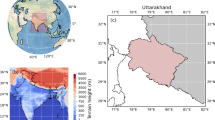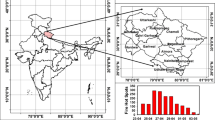Abstract
Recently, a worse and large-scale forest fire broke out across Turkey, which adversely affected the country’s air quality level and caused a tremendous loss. Mugla and Antalya cities were the hot spot areas of this fire that experienced adverse effects. In this paper, we examined and compared the air pollution before and during the forest fire episode i.e., from 27 July to 10 August 2021 in Antalya and Mugla. The results show that before the fire accusation, i.e., on 27 July, the daily mean aerosol optical depth (AOD) was 0.1 indicating a clear sky. However, after the fire breakout on 28 July, this daily mean AOD value rapidly increased to 0.52 on 6 August, indicating intense air pollution. The highest AOD was 2.2 over northern Marmaris, Ula, southeastern Milas, and Mugla Merkezon on 5 August 2021. The results show that peak fire activity occurred during 4–8 August. Meanwhile, the highest NO2 concentration was 167 µmol/m2 over mid-east Merkez and Köycegiz. The peak HCHO load was 750 µmol/m2 over southern Mugla city. Moreover, Mugla and central Antalya cities experienced the highest O3 concentration of 0.14 mol/m2. Similarly, at the junction of Dalaman, Köycegiz, and Ortaca, a peak in CO (0.08 mol/m2) and aerosol index (AI) (3.5) had been observed. The high-altitude smoke was observed over Mugla city. Whereas, over Antalya, mixed aerosols were dominant, followed by smoke, dust, non-smoke fine mode, and fine dominating aerosols.
















Similar content being viewed by others
Data availability
Data used in this study can be downloaded from the Google Earth Engine website (https://developers.google.com/earth-engine/datassets/).
References
Alencar AA, Brando PM, Asner GP, Putz FE (2015) Landscape fragmentation, severe drought, and the new Amazon forest fire regime. Ecol Appl 25(6):1493–1505. https://doi.org/10.1890/14-1528.1
Artaxo P, Rizzo LV, Brito JF, Barbosa HMJ, Arana A, Sena ET, Cirino GG, Bastos W, Martin ST, Andreae MO (2013) Atmospheric aerosols in Amazonia and land use change: from natural biogenic to biomass burning conditions. Faraday Discuss 165:203–235. https://doi.org/10.1039/C3FD00052D
Atasoy A, Geçen R (2014) Forest fires occurred on border area between Turkey (Hatay) and Syria. Procedia Soc Behav Sci 120:680–685. https://doi.org/10.1016/J.SBSPRO.2014.02.149
Bagheri R, Bagheri F, Karami GH, Jafari H (2019) Chemo-isotopes (18O & 2H) signatures and HYSPLIT model application: clues to the atmospheric moisture and air mass origins. Atmos Environ 215:116892. https://doi.org/10.1016/J.ATMOSENV.2019.116892
Baker JCA, Spracklen DV (2019) Climate benefits of intact Amazon forests and the biophysical consequences of disturbance. Front For Global Change. https://doi.org/10.3389/FFGC.2019.00047
Begum BA, Kim E, Jeong CH, Lee DW, Hopke PK (2005) Evaluation of the potential source contribution function using the 2002 Quebec forest fire episode. Atmos Environ 39(20):3719–3724. https://doi.org/10.1016/J.ATMOSENV.2005.03.008
Benas N, Mourtzanou E, Kouvarakis G, Bais A, Mihalopoulos N, Vardavas I (2013) Surface ozone photolysis rate trends in the Eastern Mediterranean: modeling the effects of aerosols and total column ozone based on Terra MODIS data. Atmos Environ 74:1–9. https://doi.org/10.1016/J.ATMOSENV.2013.03.019
Bera B, Bhattacharjee S, Sengupta N, Saha S (2021) Variation and dispersal of PM10 and PM2.5 during COVID-19 lockdown over Kolkata metropolitan city, India investigated through HYSPLIT model. Geosci Front 13:101291. https://doi.org/10.1016/J.GSF.2021.101291
Butt EW, Conibear L, Reddington CL, Darbyshire E, Morgan WT, Coe H, Artaxo P, Brito J, Knote C, Spracklen DV (2020) Large air quality and human health impacts due to Amazon forest and vegetation fires. Environ Res Commun 2(9):095001. https://doi.org/10.1088/2515-7620/ABB0DB
Cano-Crespo A, Oliveira PJC, Boit A, Cardoso M, Thonicke K (2015) Forest edge burning in the Brazilian Amazon promoted by escaping fires from managed pastures. J Geophys Res Biogeosci 120(10):2095–2107. https://doi.org/10.1002/2015JG002914
da Silva SS, Fearnside PM, de Alencastro Graça PM, Brown IF, Alencar A, de Melo AW (2018) Dynamics of forest fires in the southwestern Amazon. For Ecol Manag 424:312–322. https://doi.org/10.1016/J.FORECO.2018.04.041
Draxler RR, Spring S, Maryland USA, Hess GD (1998) An overview of the HYSPLIT_4 modelling system for trajectories, dispersion, and deposition. Aust Meteorol Mag 47:295–308
El-Nadry M, Li W, El-Askary H, Awad MA, Mostafa AR (2019) Urban health related air quality indicators over the Middle East and North Africa countries using multiple satellites and AERONET data. Remote Sens 11(18):2096. https://doi.org/10.3390/RS11182096
Elvan OD, Birben Ü, Özkan UY, Yıldırım HT, Türker YÖ (2021) Forest fire and law: an analysis of Turkish forest fire legislation based on Food and Agriculture Organization criteria. Fire Ecol 17(1):1–15. https://doi.org/10.1186/S42408-021-00102-7
Giles DM, Holben BN, Tripathi SN, Eck TF, Newcomb WW, Slutsker I, Dickerson RR, Thompson AM, Mattoo S, Wang SH, Singh RP, Sinyuk A, Schafer JS (2011) Aerosol properties over the Indo-Gangetic Plain: a mesoscale perspective from the TIGERZ experiment. J Geophys Res Atmos 116(18):D18203. https://doi.org/10.1029/2011JD015809
Heald CL, Spracklen DV (2015) Land use change impacts on air quality and climate. Chem Rev 115(10):4476–4496. https://doi.org/10.1021/CR500446G
İban MC, Şahin E (2022) Monitoring burn severity and air pollutants in wildfire events using remote sensing data: the case of Mersin wildfires in summer 2021. Gümüşhane Üniversitesi Fen Bilimleri Enstitüsü Dergisi. https://doi.org/10.17714/GUMUSFENBIL.1008242
Johnston FH, Henderson SB, Chen Y, Randerson JT, Marlier M, DeFries RS, Kinney P, Bowman DMJS, Brauer M (2012) Estimated global mortality attributable to smoke from landscape fires. Environ Health Perspect 120(5):695–701. https://doi.org/10.1289/EHP.1104422
Kaman H, Yavaş M (2014) f. Turkish Journal of Agricultural and Natural Sciences Special, 2, 1524. www.turkjans.com
Kolusu SR, Marsham JH, Mulcahy J, Johnson B, Dunning C, Bush M, Spracklen DV (2015) Impacts of Amazonia biomass burning aerosols assessed from short-range weather forecasts. Atmos Chem Phys 15(21):12251–12266. https://doi.org/10.5194/ACP-15-12251-2015
Lelieveld J, Evans JS, Fnais M, Giannadaki D, Pozzer A (2015) The contribution of outdoor air pollution sources to premature mortality on a global scale. Nature 525(7569):367–371. https://doi.org/10.1038/nature15371
Liu L, Cheng Y, Wang S, Wei C, Pöhlker ML, Pöhlker C, Artaxo P, Shrivastava M, Andreae MO, Pöschl U, Su H (2020) Impact of biomass burning aerosols on radiation, clouds, and precipitation over the Amazon: Relative importance of aerosol-cloud and aerosol-radiation interactions. Atmos Chem Phys 20(21):13283–13301. https://doi.org/10.5194/ACP-20-13283-2020
Lyapustin A, Wang Y, Laszlo I, Kahn R, Korkin S, Remer L, Levy R, Reid JS (2011a) Multiangle implementation of atmospheric correction (MAIAC): 2. Aerosol algorithm. J Geophys Res Atmos. https://doi.org/10.1029/2010JD014986
Lyapustin A, Martonchik J, Wang Y, Laszlo I, Korkin S (2011b) Multiangle implementation of atmospheric correction (MAIAC): .1 Radiative transfer basis and look-up tables. J Geophys Res Atmos 116(D3):3210. https://doi.org/10.1029/2010JD014985
Mei L, Xue Y, De Leeuw G, Guang J, Wang Y, Li Y, Xu H, Yang L, Hou T, He X, Wu C, Dong J, Chen Z (2011) Integration of remote sensing data and surface observations to estimate the impact of the Russian wildfires over Europe and Asia during August 2010. Biogeosciences 8(12):3771–3791. https://doi.org/10.5194/BG-8-3771-2011
Morgan WT, Darbyshire E, Spracklen DV, Artaxo P, Coe H (2019) Non-deforestation drivers of fires are increasingly important sources of aerosol and carbon dioxide emissions across Amazonia. Sci Rep 9(1):1–15. https://doi.org/10.1038/s41598-019-53112-6
Nolan RH, Boer MM, Collins L, Resco de Dios V, Clarke HG, Jenkins M, Kenny B, Bradstock RA (2020) Causes and consequences of eastern Australia’s 2019–20 season of mega-fires. Global Change Biol. https://doi.org/10.1111/gcb.14987
Ozdemir E, Tuna Tuygun G, Elbir T (2020) Application of aerosol classification methods based on AERONET version 3 product over eastern Mediterranean and Black Sea. Atmos Pollut Res 11(12):2226–2243. https://doi.org/10.1016/J.APR.2020.06.008
Prins DM, Menzel WP (2007) Geostationary satellite detection of bio mass burning in South America. Int J Remote Sens 13(15):2783–2799. https://doi.org/10.1080/01431169208904081
Qu S, Chen X, Wang Y, Shi P, Shan S, Gou J, Jiang P (2018) Isotopic characteristics of precipitation and origin of moisture sources in hemuqiao catchment, a small watershed in the lower reach of Yangtze River. Water 10(9):1170. https://doi.org/10.3390/W10091170
Rao W, Zhang W, Yong B, Tan H, Meredith KT, Jin K, Zheng F, Wang S (2018) Identifying the source of atmospheric moisture over arid deserts using stable isotopes (2H and 18O) in precipitation. Hydrol Process 32(3):436–449. https://doi.org/10.1002/HYP.11431
Reddington CL, Spracklen DV, Artaxo P, Ridley DA, Rizzo LV, Arana A (2016) Analysis of particulate emissions from tropical biomass burning using a global aerosol model and long-term surface observations. Atmos Chem Phys 16(17):11083–11106. https://doi.org/10.5194/ACP-16-11083-2016
Sevinc V, Kucuk O, Goltas M (2020) A Bayesian network model for prediction and analysis of possible forest fire causes. For Ecol Manage 457:117723. https://doi.org/10.1016/J.FORECO.2019.117723
Sharma M, Kaskaoutis DG, Singh RP, Singh S (2014) Seasonal variability of atmospheric aerosol parameters over greater noida using ground sunphotometer observations. Aerosol and Air Quality Research 14(3):608–622. https://doi.org/10.4209/AAQR.2013.06.0219
Sowden M, Mueller U, Blake D (2018) Review of surface particulate monitoring of dust events using geostationary satellite remote sensing. Atmos Environ 183:154–164. https://doi.org/10.1016/J.ATMOSENV.2018.04.020
Spracklen DV, Garcia-Carreras L (2015) The impact of Amazonian deforestation on Amazon basin rainfall. Geophys Res Lett 42(21):9546–9552. https://doi.org/10.1002/2015GL066063
Spracklen DV, Arnold SR, Taylor CM (2012) Observations of increased tropical rainfall preceded by air passage over forests. Nature 489(7415):282–285. https://doi.org/10.1038/nature11390
Tariq S, Zia H, Ali M (2016) Satellite and ground-based remote sensing of aerosols during intense haze event of October 2013 over Lahore, Pakistan. Asia-Pac J Atmos Sci 52(1):25–33. https://doi.org/10.1007/s13143-015-0084-3
Van Der Werf GR, Randerson JT, Giglio L, Van Leeuwen TT, Chen Y, Rogers BM, Mu M, Van Marle MJE, Morton DC, Collatz GJ, Yokelson RJ, Kasibhatla PS (2017) Global fire emissions estimates during 1997–2016. Earth System Sci Data 9(2):697–720. https://doi.org/10.5194/ESSD-9-697-2017
Veefkind JP, Aben I, McMullan K, Förster H, de Vries J, Otter G, Claas J, Eskes HJ, de Haan JF, Kleipool Q, van Weele M, Hasekamp O, Hoogeveen R, Landgraf J, Snel R, Tol P, Ingmann P, Voors R, Kruizinga B, Vink R, Visser H, Levelt PF (2012) TROPOMI on the ESA Sentinel-5 Precursor: A GMES mission for global observations of the atmospheric composition for climate, air quality and ozone layer applications. Remote Sens Environ 120(SI):70–83. https://doi.org/10.1016/J.RSE.2011.09.027
Wei X, Bai K, Chang N-B, Gao W (2021) Multi-source hierarchical data fusion for high-resolution AOD mapping in a forest fire event. Int J Appl Earth Obs Geoinf 102:102366. https://doi.org/10.1016/J.JAG.2021.102366
Wiedinmyer C, Akagi SK, Yokelson RJ, Emmons LK, Al-Saadi JA, Orlando JJ, Soja AJ (2011) The Fire INventory from NCAR (FINN): A high resolution global model to estimate the emissions from open burning. Geosci Model Dev 4(3):625–641. https://doi.org/10.5194/GMD-4-625-2011
Wu H, Zhang X, Xiaoyan L, Li G, Huang Y (2015) Seasonal variations of deuterium and oxygen-18 isotopes and their response to moisture source for precipitation events in the subtropical monsoon region. Hydrol Process 29(1):90–102. https://doi.org/10.1002/HYP.10132
Xing J, Wang J, Mathur R, Wang S, Sarwar G, Pleim J, Hogrefe C, Zhang Y, Jiang J, Wong DC, Hao J (2017) Impacts of aerosol direct effects on tropospheric ozone through changes in atmospheric dynamics and photolysis rates. Atmos Chem Phys 17:9869–9883. https://doi.org/10.5194/acp-17-9869-2017
Zielinski T, Petelski T, Strzalkowska A, Pakszys P, Makuch P (2016) Impact of wild forest fires in Eastern Europe on aerosol composition and particle optical properties. Oceanologia 58(1):13–24. https://doi.org/10.1016/j.oceano.2015.07.005
Acknowledgements
We are also thankful to NOAA Air Resources Laboratory (ARL), MODIS, and Suomi NPP/VIIRS mission scientists for the production of the data used in this research effort. We are also grateful to European Space Agency (ESA) for providing Copernicus Sentinel data and products.
Funding
This work does not get any funding from any organization.
Author information
Authors and Affiliations
Contributions
ST conceptualizes the work and wrote the manuscript. AM make maps and wrote the description. UM conducted analysis. ZH wrote the manuscript.
Corresponding author
Ethics declarations
Competing interests
The authors have not disclosed any competing interests.
Ethical approval
Not required.
Consent to publish
Not applicable.
Consent to participate
All authors participate in this research.
Additional information
Publisher's Note
Springer Nature remains neutral with regard to jurisdictional claims in published maps and institutional affiliations.
Rights and permissions
Springer Nature or its licensor holds exclusive rights to this article under a publishing agreement with the author(s) or other rightsholder(s); author self-archiving of the accepted manuscript version of this article is solely governed by the terms of such publishing agreement and applicable law.
About this article
Cite this article
Tariq, S., ul‐Haq, Z., Mariam, A. et al. Assessment of air quality during worst wildfires in Mugla and Antalya regions of Turkey. Nat Hazards 115, 1235–1254 (2023). https://doi.org/10.1007/s11069-022-05592-5
Received:
Accepted:
Published:
Issue Date:
DOI: https://doi.org/10.1007/s11069-022-05592-5




